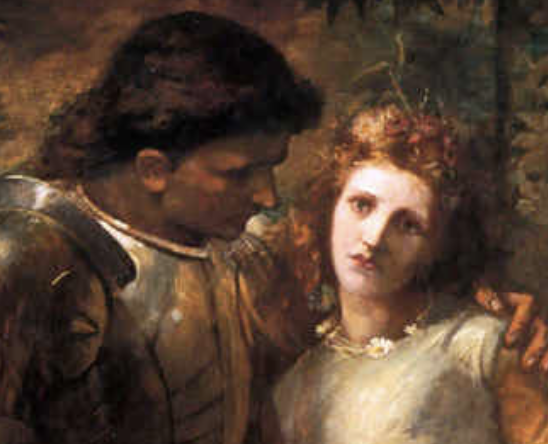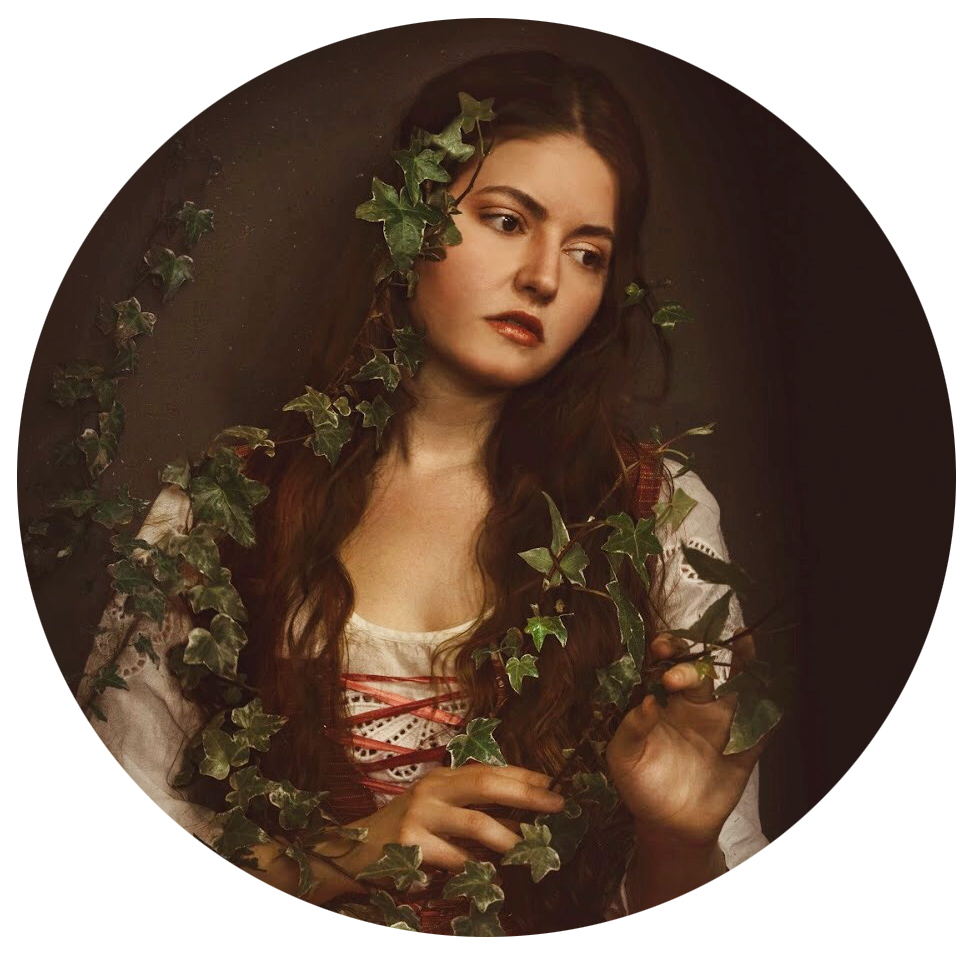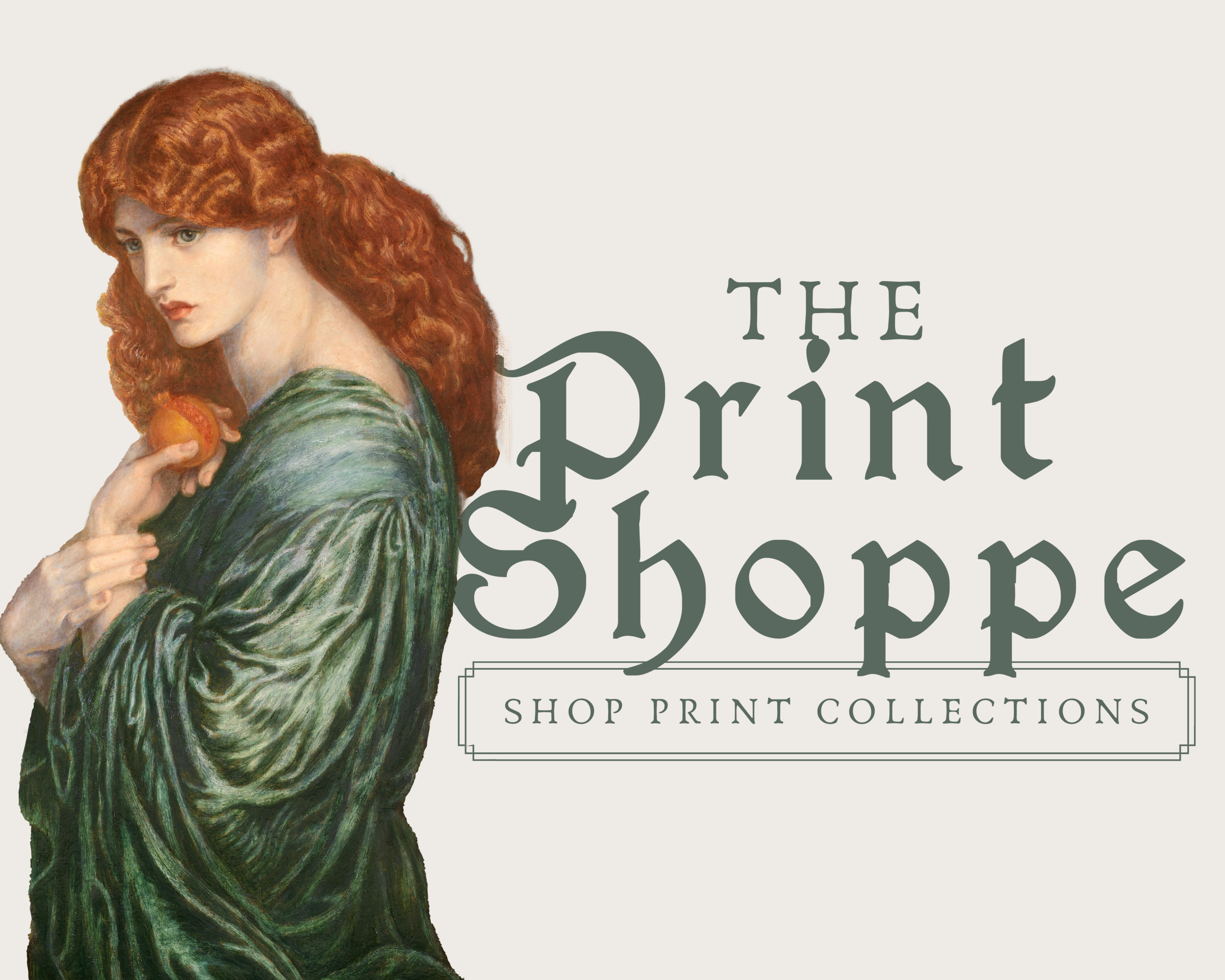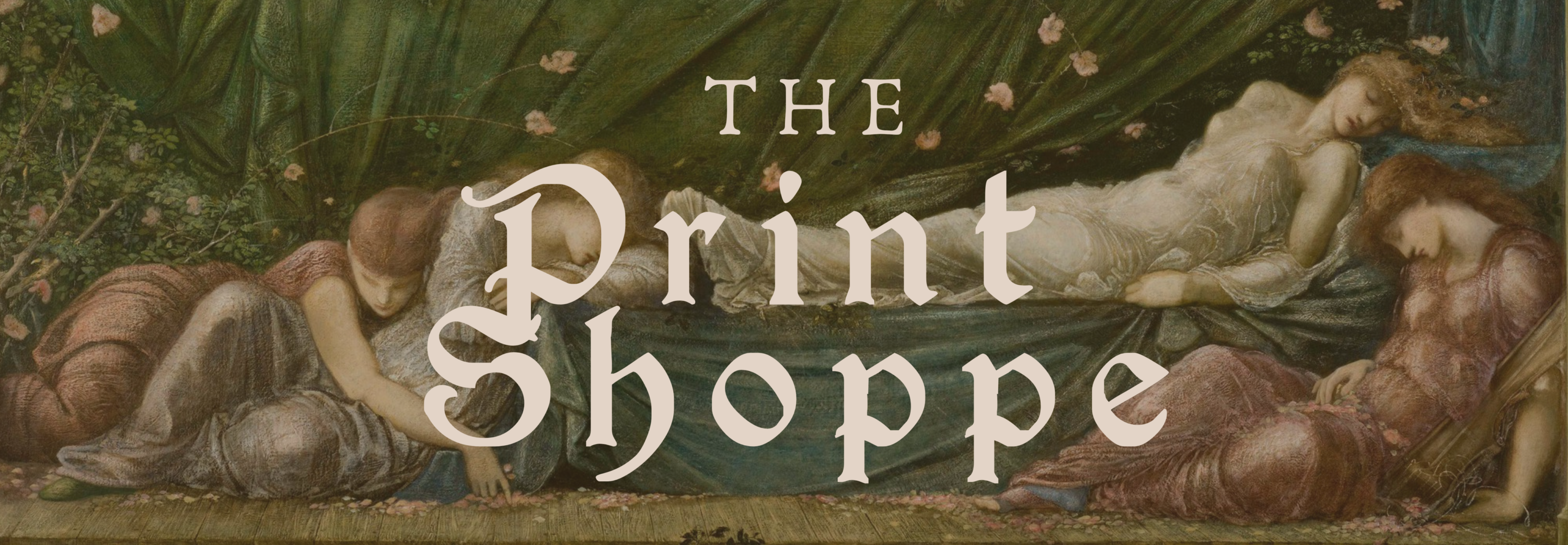
An analysis of the Language of Flowers used in John Everett Millais’ Ophelia and John Milton’s Paradise Lost
by Jesse Campbell

Satan Watching the Endearments of Adam and Eve by William Blake (1808)
He led her nothing loath; flowers were the couch,
Paradise Lost, Book IX
Pansies, and violets, and asphodel,
And hyacinth, earth’s freshest, softest lap.
There they their fill of love and love’s disport
Took largely, of their mutual guilt the seal,
The solace of their sin, till dewy sleep
Oppressed them, wearied with their amorous play.
In the midst of my attempts to decode the symbolic significance of John Everett Millais’ depiction of Ophelia’s vegetative coffin, I unearthed a resemblance between the floral arrangement surrounding Ophelia and the description of Adam and Eve’s nuptial bed in John Milton’s Paradise Lost. I believe that through Ophelia’s “weedy trophies,” Millais alludes to the loss of innocence present in Milton’s Edenic fall of man. Regardless if I have mistakenly identified a motif of morality that is not truly there, I subscribe to John Holmes’s argument in Pre-Raphaelites and Science that:
“. . . psychology as the Pre-Raphaelites
understand it is more than just the science of the mind. It is the study of the emotional and moral make-up of the whole person.”

In my previous blog post, The Language of Ophelia’s Flowers, you will find an in-depth analysis of Millais’ unmistakable depiction of pansies, roses and violets along with my identification of the iris, jasmine (also referred as jessamine), crocus, hyacinth and asphodel (all of which are also present in Paradise Lost). These flowers that I believed to be surrounding Millais’ Ophelia revealed to me a garland of deep literary and mythological symbology, but now I am intrigued by the possibility that these flowers were picked from Milton’s Garden of Eden, crowning Ophelia with the burden of Victorian ideals and Gothic obsession with purity.
Iris all hues, Roses, and Gessamin
Paradise Lost, IV, 697-703
Rear’d high thir flourisht heads between, and wrought Mosaic; underfoot the Violet,
Crocus,and Hyacinth with rich inlay-
Broiderd the ground, more colour’d then with stone. Of costliest Emblem:

P A R T I

“Virtue itself ‘scapes not calumnious strokes
The canker galls the infants of the spring
Too oft before their buttons be disclosed.”
— Laretes, Act I, Scene III

In this passage, Ophelia’s brother, Laertes, alludes to a popular Elizabethan proverb, “Envy shoots at the fairest mark,” to warn Ophelia of Hamlet’s ill intent and resulting “calumnious strokes” or bad reputation that could befall her as her purity is an easy target (myShakespeare). Specifically, Laertes warns her of the perils of losing her virginity (Green World 38). Later in the play, Hamlet reiterates this same idea of “calumnious strokes,’ where some critics believe he is arguing that beauty will corrupt virtue.
When Hamlet begins this scene by asking Ophelia if she is honest, he is possibly referring to chastity or simply virtue. Bawd, mentioned later in their conversation, refers to a “woman in charge of a brothel. He also twists Ophelia’s meaning of commerce from “conversation” to “sales.” Following Hamlet’s line of logic, Ophelia’s “fairness” or beauty will corrupt her:
HAMLET
That if you be honest and fair, your honesty should
admit no discourse to your beauty.

OPHELIA
Could beauty, my lord, have better commerce than
with honesty?
HAMLET
Ay, truly, for the power of beauty will sooner
transform honesty from what it is to a bawd than the
force of honesty can translate beauty into his likeness.
This was sometime a paradox,
but now the time gives it proof. I did love you once.
Act III, Scene I
Using an agricultural metaphor, Hamlet explains to Ophelia that he never actually was in love her and that she should not have been believed him due to his own lack of virtue:
You should not have believed me, for virtue cannot
So inoculate our old stock but we shall relish of it.
I love you not.
Hamlet, Act III Scene I
In other words, virtue ( the new branch) can not graft to our original sin (the original stock) and change our state of virtue or “sinful nature.” Instead, “we shall relish of it” or still taste the forbidden fruit (myshakespeare).
Get thee to a nunnery: why wouldst thou be a
breeder of sinners? I am myself indifferent honest;
but yet I could accuse me of such things that it
were better my mother had not borne me: I am very
proud, revengeful, ambitious, with more offences at
my beck than I have thoughts to put them in,
imagination to give them shape, or time to act them
in. What should such fellows as I do crawling
between earth and heaven? We are arrant knaves,
all; believe none of us. Go thy ways to a nunnery.
Where’s your father?
Here, it is important to note that during the Elizabethan Era, “get thee to a nunnery” was a euphemism for brothel (Williams 219).
Returning to Laertes’ warning, he continues on with “The canker galls the infants of the spring,” which draws from a personal favorite Elizabethan proverb is “the canker soonest eats the fairest rose.” One can imagine a canker worm boring holes through a delicate English rose.
From here, I think it is important to travel further back in time and enter the Elizabethan Era to address the societal framework from which Ophelia’s character was birthed. During the Elizabethan Era, Ophelia would have been viewed as a victim of erotomania (Showalter 85). In other words, the Elizabethans attributed Ophelia’s madness to “unrequited love and repressed sexual desire.” (Showalter). Showalter also argues that the scene of floral offerings (e.g. “There’s fennel for you, and columbines”) symbolizes the deflowering of Ophelia.

P A R T II

“Her flowers suggest the discordant double images of female sexuality as both innocent blossoming and whorish contamination; she is the “green girl” of pastoral, the virginal “Rose of May: and the sexually explicit madwoman . . .”
Showalter, Ophelia: The Responsibilities of Feminist Criticism
Though the beautiful madwoman was a popular subject for Pre-Raphaelites, there was not shared admiration among many Victorians who felt “virtue and vice collide within” Ophelia (Rhodes). The conflicting views of Ophelia conjures up imagery of a blighted “rose of may.” For example, in the 1800s, the psychologist, John Charles Bucknill, wrote that the fallen woman was a product of modernity: “. . . Ophelia manifests conventions of middle-class femininity considered acceptable and admirable in nineteenth-century Britain, she displays those of the female transgressor as well” (Rhodes). In 1875, the author of A Study of Hamlet, Frank A. Marshall , wrote that “one cannot fail to see which is the purest creation. She is Shakespeare’s most perfect portrait of virginity” (Rhodes). In Victorian society, Ophelia embodied both ideal femininity and the licentious behavior of the fallen woman (Inge 3-8).
“. . . Ophelia manifests conventions of middle-class femininity considered acceptable and admirable in nineteenth-century Britain, she displays those of the female transgressor as well.”
Ophelia and Victorian Visual Culture: Representing Body Politics in the Nineteenth Century, Rhodes
A female malady, as Showalter later describes, was “associated with the sexuality and the essential nature of women” through the Victorian psychiatric lens (Showalter 7). Unsurprisingly, based on this logic, during 1850, the female population in Victorian asylums surpassed number of men committed (Showalter 52). Many of these women were viewed as morally starved, as was the case with Florence Nightingale’s case study of Cassandra who was diagnosed as “the product of repressed sexuality” (Showalter 64). I believe this to reflect a similarity in how Laertes views Ophelia as a “document in madness” in Act 4 Scene 5. Showalter later compared the diagnosis for the madwoman of the Elizabethan Era to one of the Victorian Era, stating that “Elizabethans would have diagnosed as female love – melancholy, or erotomania” (Showalter 81).

P A R T III

If thou dost marry, I’ll give thee this plague for
thy dowry. Be thou as chaste as ice, as pure as
snow, thou shalt not escape calumny.
Hamlet, Act III, Scene I
Rhodes interprets Hamlet’s curses as a reference to the “Original Sin in this passage with women cast as daughters of Eve, forever cursed by her transgression in the Garden of Eden” (Rhodes).. From here, I would like to led us under the blissful bower in Paradise Lost:
He led her nothing loath; flowers were the couch,
Pansies, and violets, and asphodel,
And hyacinth, earth’s freshest, softest lap.
There they their fill of love and love’s disport
Took largely, of their mutual guilt the seal,
The solace of their sin, till dewy sleep
Oppress’d them, wearied with their amorous play.
Paradise Lost, Book IX, 1039-1045
Iris all hues, roses and jessamine
Reared high their flourished heads between, and wrought
Mosaic; underfoot the violet,
Crocus, and hyacinth, with rich inlay
Broidered the ground, more colored than with stone
Of costliest emblem:
Paradise Lost, IV, 697-703

After reading my first post on the Language of Ophelia’s Flowers, you will find that the floral references “decking the couch of Adam and Eve” were included in my analysis: violets, crocus, hyacinth, roses and jessamine (Hogg 623). Millais’ incorporation of each of these loose flowers strewn around Ophelia recall the Renaissance iconography that represent the deflowering of a woman just as Shakespeare’s writing had in Elizabethan Era (Showalter 11). One of these loose flowers includes the Asphodel, which is I also identified, is defined as a literary allusion to snakes “asp,” which was an “anglicized form of aspis, name used in classical antiquity for a venomous snake” (Hawkes 299; Britannica). Alongside, you will find I identified the hyacinth along with the unmistakable pansy. In England, it was common practice to mix hyacinths with pansies, like the Viola tricolor, in garden beds (Milton’s Plants in Paradise). The entirety of the floral combination described in the passage above is depicted in William Blake’s illustration for Paradise Lost (shown earlier). It is important to note that Blake was also a known literary source of inspiration for the Pre-Raphaelite brotherhood (Hardin 4).
In “Milton and the Natural World: Science and Poetry in Paradise Lost,” Karen Edwards argues Milton’s description of Eden follows the scientific discoveries and advancements within the field of Natural History during his time of creating this epic poem, which is reminiscent of the painstaking detail of Millais’ Ophelia, an aesthetic that prefigures Romantic naturalism (Edwards, 2005; Shullenberger, 2014).
With a weighted violet necklace symbolizing chastity hanging around her neck, Ophelia floated out of a “Romantic, Gothic fascination with female sexuality and madness” (Frisch) and into a moral zeitgeist of the Victorian Era, which included rescuing the “fallen woman” in forms of coercion and regulation (i.e. insane asylums and domestic sphere). Was there an added layer of symbology in Millais’ Ophelia alluding to the Original Sin? For now, I will leave you with these words from John Ruskin in regards to Shakespeare’s plays:
“The catastrophe of every play is caused always by the folly or fault of a man; the redemption, if there be any, is by the wisdom and virtue of a woman, and, failing that, there is none.”

R E S O U R C E S
References
Auerbach, N. (1980). The Rise of the Fallen Woman. Nineteenth-Century Fiction, 35(1), 29-52.
Britannica Asp. https://www.britannica.com/animal/asp
Edwards, K. L. (2005). Milton and the natural world: science and poetry in Paradise lost. Cambridge University Press.
Frisch, E. (2013). Pre-Raphaelite Painting and the Medieval Woman.
Michael John Goodman, The Victorian Illustrated Shakespeare Archive. (VISA) [1 January 2021]
Hanford, James Holly. “The Dramatic Element in ‘Paradise Lost.’” Studies in Philology, vol. 14, no. 2, 1917, pp. 178–195.
Hawkes, David. “Paradise Lost Introduction and Notes.” Barnes and Noble Classics
Hogg’s Weekly Instructor, Volume 10
Huckabay, C. (1955). Milton’s Literary Reputation During the Victorian Era.
Holman, H. W. (2015). Pre-Raphaelitism and the Pre-Raphaelite Brotherhood.
Inge, Katherine. (2013). The Complicated Character and Duality in John Everett Millais’s Death of Ophelia.
McIntyre, R. S. (2008). “Flowers Worthy of Paradise”: Milton and the Language of Flowers. Milton Studies, 47, 145-167.
Morris, H. (1958). Ophelia’s” Bonny Sweet Robin”. Publications of the Modern Language Association of America, 601-603.
Rhodes, K. (2001). Degenerate Detail: John Everett Millais and Ophelia’s’ Muddy Death’. John Everett Millais Beyond the Pre-Raphaelite Brotherhood, 43-68.
Rhodes, K. (2017). Ophelia and Victorian Visual Culture: Representing Body Politics in the Nineteenth Century. Routledge.
Showalter, E. (2016). Ophelia, gender and madness. The British Library.
Showalter, E., Shakespeare, W., & Wofford, S. L. (1994). Representing Ophelia: women, madness, and the responsibilities of feminist criticism. Macmillan.
Showalter, E. (1985). The female malady: Women, madness, and English culture, 1830-1980.
Shullenberger, W. (2014). Imagining Eden. Louis Schwartz, 125-37.
Steelman, S. L. (2009). Transcending Tragedy: The Power of the Green World in Renaissance Drama.
Williams, G. (2006). Shakespeare’s Sexual Language: A Glossary. A&C Black.









